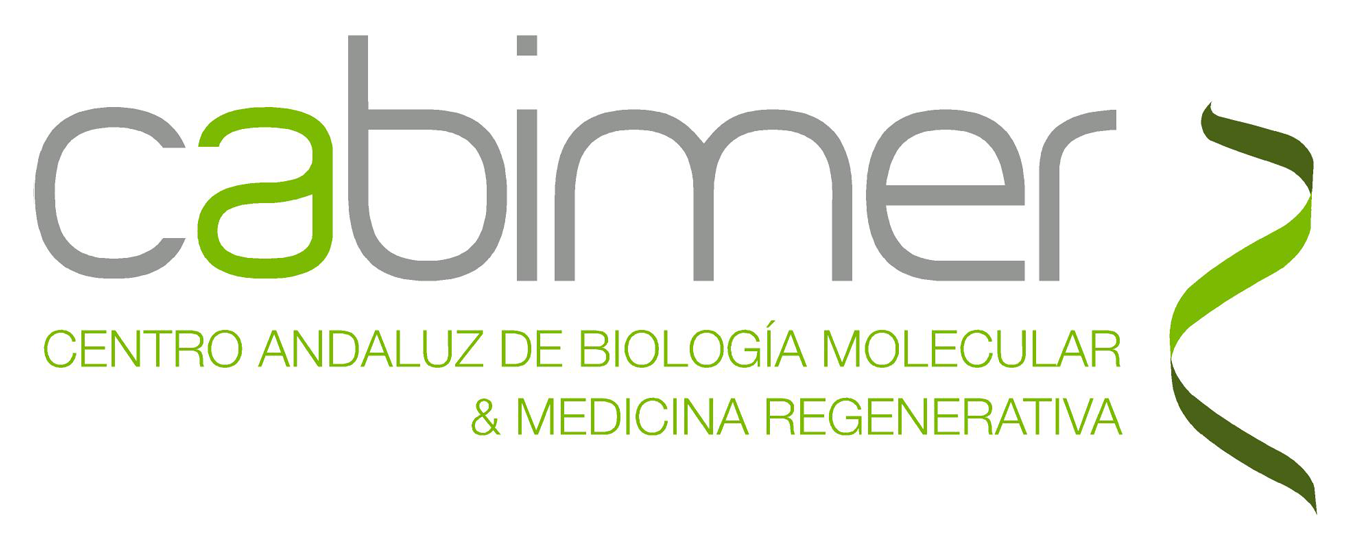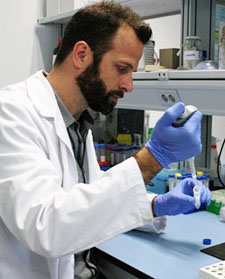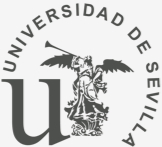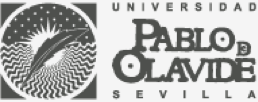Book Chapters/Capítulos en Libros
Gómez-González B, Ruiz JF, Aguilera A. (2011) Genetic and molecular analysis of mitotic recombination in Saccharomyces cerevisiae. Methods in Molecular Biology 745:151-72. doi: 10.1007/978-1-61779-129-1_10. Book chapter in DNA Recombination Methods and Protocols (Ed. Tsubouchi, Hideo)
Publications in Scientific Journals/Publicaciones en Revistas de Investigación
Serrano-Benítez A, Cortés-Ledesma F, Ruiz JF. 2020. An End to a Means: How DNA-End Structure Shapes the Double-Strand Break Repair Process. Front Mol Biosci. 6:153. doi: 10.3389/fmolb.2019.00153
Moreno-Oñate M, Herrero-Ruiz AM, García-Dominguez M, Cortés-Ledesma F, Ruiz JF. 2020. RanBP2-Mediated SUMOylation Promotes Human DNA Polymerase Lambda Nuclear Localization and DNA Repair. J Mol Biol. S0022-2836(20)30253-9. doi: 10.1016/j.jmb.2020.03.020.
García-Rubio M, Aguilera P, Lafuente-Barquero J, Ruiz JF, Simon MN, Geli V, Rondón AG and Aguilera A (2018) Yra1-bound RNA–DNA hybrids cause orientation-independent transcription–replication collisions and telomere instability. Genes and Development, 32, 965-977. doi:10.1101/gad.311274.117.
Sastre-Moreno G, Pryor, JM, Díaz-Talavera, A, Ruiz JF, Ramsden, DA and Blanco, L. (2017) Polμ tumour variants decrease the efficiency and accuracy of NHEJ. Nucleic Acids Research, 45(17), 10018-10031. doi:10.1093/nar/gkx625.
Muñoz-Galván, S, García-Rubio, M, Ruiz JF, Pardo, B, Jimeno, S, Gómez-González, B and Aguilera, A. (2017) A role for Rrm3 in sister chromatid recombination upon replication-born DNA breakage. PLoS Genetics 13(5): e1006781.doi.org/10.1371/journal.pgen. 1006781.
Sastre-Moreno G, Pryor, JM, Moreno-Oñate, M, Herrero-Ruiz, AM, Cortés-Ledesma, F, Blanco, L, Ramsden, DA and Ruiz JF # (2017) (#corresponding author). Regulation of human Polλ by ATM-mediated phosphorylation during Non-Homologous End Joining. DNA Repair 51:31-45. DOI: 10.1016/j.dnarep.2017.01.004.
Ruiz JF #, Pardo B, Sastre-Moreno G, Aguilera A#, Blanco L# (2013) Yeast pol4 promotes tel1-regulated chromosomal translocations. PLoS Genetics 9(7): e1003656. (#corresponding authors). doi: 10.1371/journal.pgen.1003656
Ruiz JF, Gómez-González B, Aguilera A. (2011) AID induces double-strand breaks at immunoglobulin switch regions and c-MYC causing chromosomal translocations in yeast THO mutants. PLoS Genetics 7(2): e1002009. doi: 10.1371/journal.pgen. 1002009.
Ruiz JF, Gómez-González B, Aguilera A. (2009) Chromosomal translocations caused by either pol32-dependent or pol32-independent triparental break-induced replication. Molecular and Cellular Biology 29(20):5441-54. doi: 10.1128/MCB.00256-09.
Juárez R, Ruiz JF, Nick McElhinny SA, Ramsden D, Blanco L. (2006) A specific loop in human DNA polymerase mu allows switching between creative and DNA-instructed synthesis. Nucleic Acids Research 34(16):4572-82. doi: 10.1093/nar/gkl457.
Lucas D, Laín de Lera T, González MA, Ruiz JF, Domínguez O, Casanova JC, Martínez-A C, Blanco L, Bernad A. (2005) Polymerase mu is up-regulated during the T cell-dependent immune response and its deficiency alters developmental dynamics of spleen centroblasts. European Journal of Immunology 35(5):1601-11. doi: 10.1002/eji.200526015.
González-Barrera S, Sánchez A, Ruiz JF, Juárez R, Picher AJ, Terrados G, Andrade P, Blanco L. (2005) Characterization of SpPol4, a unique X-family DNA polymerase in Schizosaccharomyces pombe. Nucleic Acids Research 33(15):4762-74. doi: 10.1093/nar/gki780.
Ruiz JF, Lucas D, García-Palomero E, Saez AI, González MA, Piris MA, Bernad A, Blanco L. (2004) Overexpression of human DNA polymerase mu (Pol mu) in a Burkitt’s lymphoma cell line affects the somatic hypermutation rate. Nucleic Acids Research 32(19):5861-73. doi:10.1093/nar/gkh929.
Ruiz JF, Juárez R, García-Díaz M, Terrados G, Picher AJ, González-Barrera S, Fernández de Henestrosa, AR and Blanco L. (2003) Lack of sugar discrimination by human Pol mu requires a single glycine residue. Nucleic Acids Research 31(15):4441-9. doi: 10.1093/nar/gkg637.
García-Díaz M, Ruiz JF, Juárez R, Terrados G and Blanco L. (2003) Are there mutator polymerases? Scientific World Journal. 3:422-31.
García-Díaz M, Bebenek K, Sabariegos R, Domínguez O, Rodríguez J, Kirchhoff T, García-Palomero E, Picher AJ, Juárez R, Ruiz JF, Kunkel TA, and Blanco L. (2002) DNA polymerase lambda, a novel DNA repair enzyme in human cells. Journal of Biological Chemistry 277(15):13184-91. doi 10.1074/jbc.M111601200.
Ruiz JF, Domínguez O, Laín de Lera T, Garcia-Díaz M, Bernad A, and Blanco L (2001) DNA polymerase mu, a candidate hypermutase? Philosophical Transactions of the Royal Society of London Series B Biological Sciences 356(1405):99-109. doi:10.1100/tsw.2003.32.
García-Díaz M, Domínguez O, López-Fernández LA, de Lera LT, Saníger ML, Ruiz JF, Párraga M, García-Ortiz MJ, Kirchhoff T, del Mazo J, Bernad A, Blanco L. (2000) DNA polymerase lambda (Pol lambda), a novel eukaryotic DNA polymerase with a potential role in meiosis. Journal of Molecular Biology 301(4):851-67. doi:10.1006/jmbi.2000.4005.
Domínguez O#, Ruiz JF #, Laín de Lera T, García-Díaz M, González MA, Kirchhoff T, Martínez-A C, Bernad A, Blanco L. (2000) DNA polymerase mu (Pol mu), homologous to TdT, could act as a DNA mutator in eukaryotic cells. EMBO J. 19(7): 1731-42 (# co-authors). doi: 10.1093/emboj/19.7.1731.
.
Science Divulgation Articles/Publicaciones en Revistas de Divulgación
Nuevas fórmulas ‘made in Spain’ para diagnosticar el SARS-CoV-2, en The Conversation, 10/05/2020
https:/theconversation.com/nuevas-formulas-made-in-spain-para-diagnosticar-el-sars-cov-2-137801
“Sin Ciencia y científicos no hay futuro”, en Diario de Sevilla (especial Salud y Bienestar), 30/05/2020
https:/www.diariodesevilla.es/salud/Ciencia-cientificos-futuro_0_1468953301.html
Ruiz JF, Sastre-Moreno G (2017) Identificada una nueva vía de regulación en la reparación de roturas de doble cadena en ADN de células humanas. En: Genética Médica News.. Vol. 4. Núm. 76. Pag. 17-19







